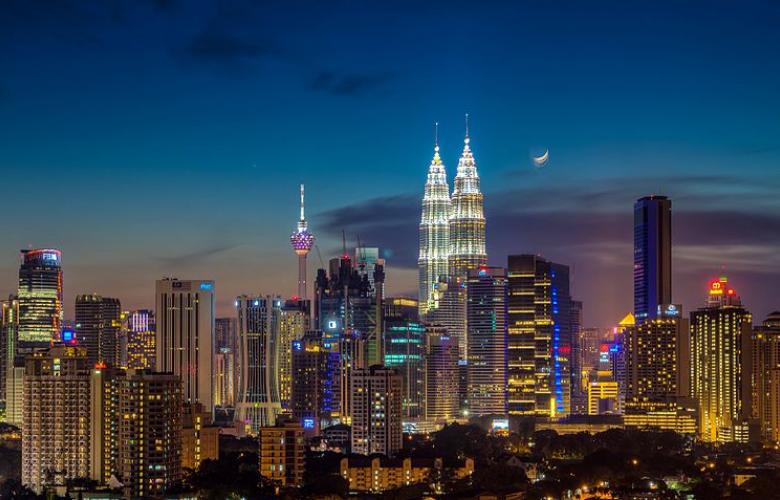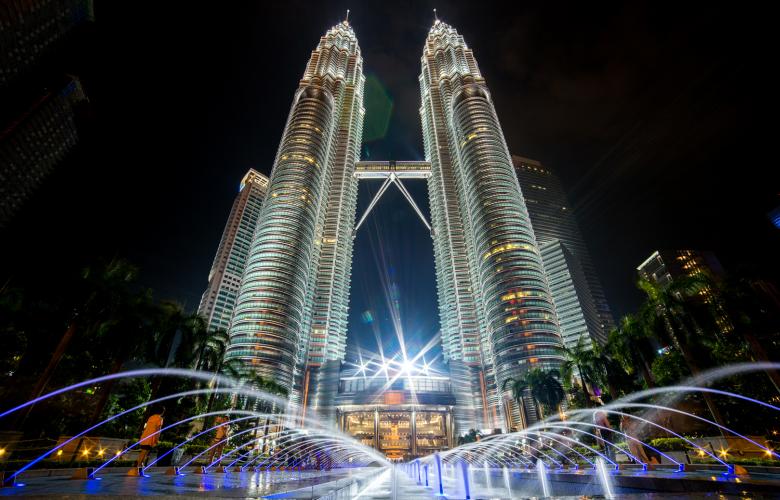The iconic Petronas Twin Towers symbolise modern Malaysia
Contact
The iconic Petronas Twin Towers symbolise modern Malaysia
The towers help place Malaysia on the international stage as a major player in globalised economy.
“There is nothing more iconic when talking about Malaysia than the Twin Towers. People in the streets of New York, London or Tokyo may not know where Malaysia is geographically, but show them the picture of The Twin Towers and immediately they will know where it is,” says Y.Y. Lau, Managing Director of JLL Malaysia. “The Petronas Twin Towers symbolized the desire and aspiration of all Malaysians to be featured prominently on the international stage and as a major player in globalised economy.”
The Petronas Twin Towers are the focal point of the skyline of Kuala Lumpur. Tourists use the iconic structures in the background of their holiday snaps.
They were designed by Argentine architect Cesar Pelli, and completed in 1996. For six years, the buildings claimed the title of ‘world’s tallest building,’ and although the title has been usurped by newer construction, they remain the symbol of modern Malaysia.
The design combines Malaysian architectural heritage and hints of the Islamic culture and is constructed from reinforced concrete with steel and glass façades.
“The structure itself was based on Rub El Hizb, a Muslim symbol comprised of two overlapping squares which are commonly found in Islamic design. The soaring towers taper in six stages to as they soar into the sky giving the building a distinctly Malaysian feel against the regular form of neighbouring skyscrapers,” says Lau.
Excavation of the original site found the bedrock would not be able to support the structures, so the project was shifted 60 meters (200 ft) southeast to suitable terrain. The buildings had the deepest foundations of any building at the time of completion at 21 metres.
The Malaysian government had two separate construction consortiums to build the 88-storey towers to help meet strict deadlines. Tower 1 was built by a Japanese consortium and Tower 2 by a South Korean consortium. Instead of standing independently, the two buildings are linked by a double-decker skybridge – the highest in the world – which slides in and out of the towers to prevent them from fracturing as they sway in high winds.
“At the time of its completion, it was used as a cultural landmark for all Malaysians to showcase the country. It became the heart of the city for both locals and visitors,” Lau says. “The center of gravity for business activities was moved from the older parts of the city to the recently built Kuala Lumpur City Centre (KLCC) area where the twin towers are located,”
The Twin Towers are currently used as an office building and house the headquarters for the national oil company, Petronas, which give the Towers their name. “Its modern look has become the benchmark of the contemporary mega skyscraper,” says Lau. “Despite evolving architectural techniques and construction methods, the Twin Towers remain, as the former Prime Ministers put it, a modern symbol for the courage, ingenuity, initiative, determination, energy, confidence, optimism, advancement and zest of a nation.”
Source: JLL
Similar to this:
Architecturally-designed penthouse in One KL, Jalan Pinang, Malaysia
Live the high life in 18 East at Andaman's splendid ocean-view penthouse
Kuala Lumpur condominium with rooftop pool & panoramic views









